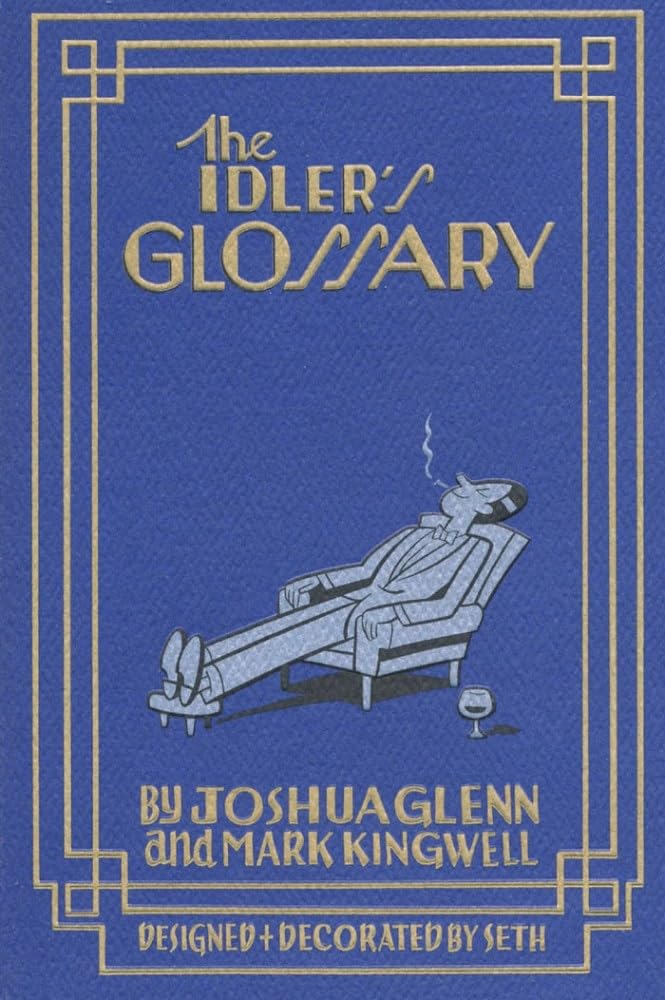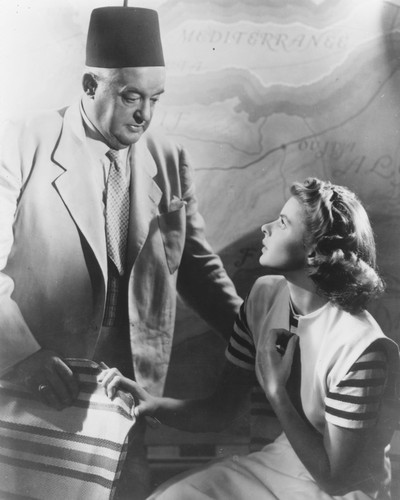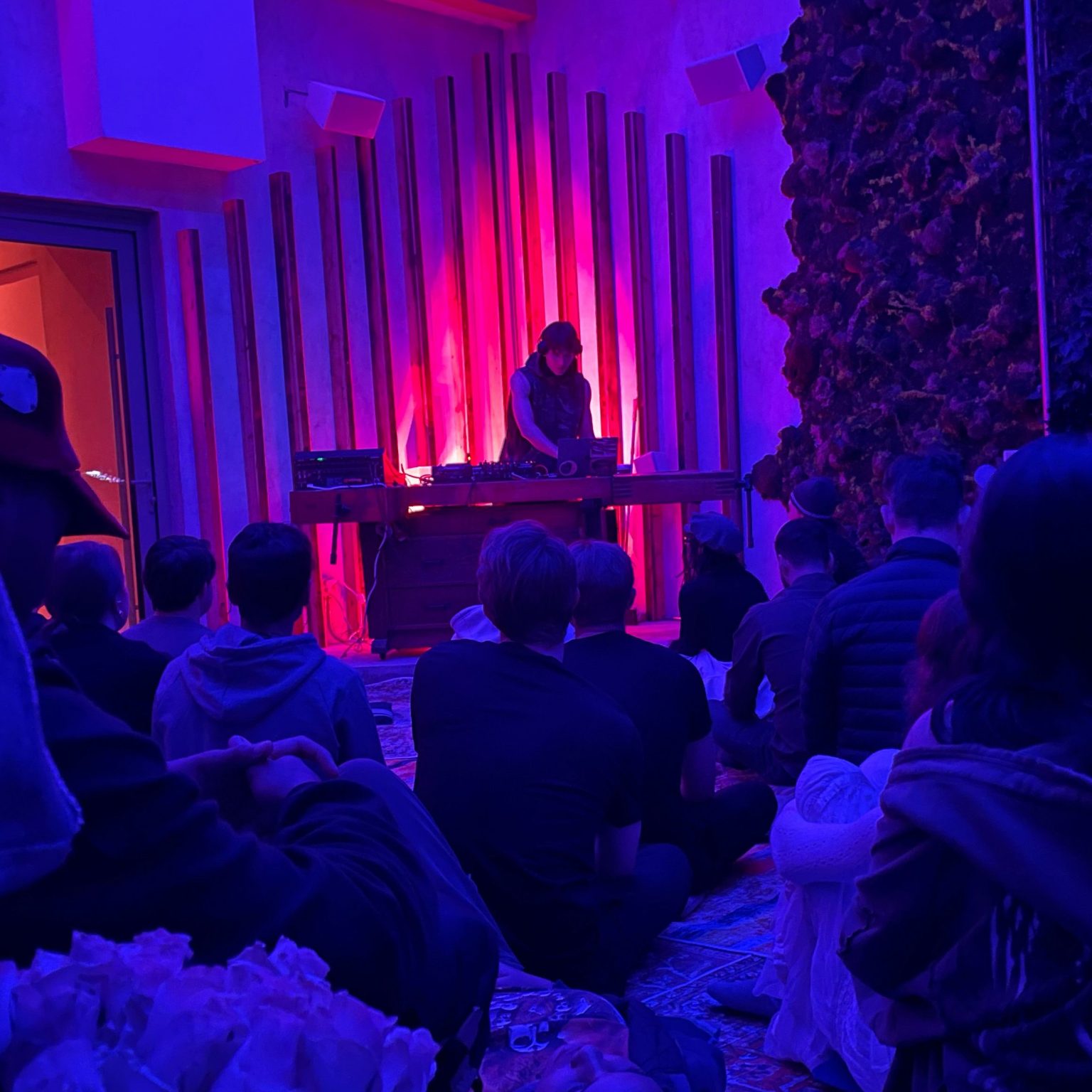HYPOCRITE IDLER 1Q2025
By:
March 30, 2025
To idle is to work on meaningful and varied projects — and to take it easy. The title of the series refers to this self-proclaimed idler’s inability to take it easy.
HILOBROW is a noncommercial blog. None of the below should be construed as an advertisement for one of my various, more or less profitable projects. This series is merely intended to keep HILOBROW’s readers updated on the editor’s doings and undoings.
I am grateful to the talented and generous folks with whom I’ve collaborated during 1Q2025.
MORE HYPOCRISY: 2010 | 2011 | 2012 | 2013 | 2014 | 2015 | 2016 | 2017 | 2018 | 2019 | 2020 | 2021 | 2022 | 2023 | 2024 | 1Q2025.
Also see: HILOBROW 1Q2025.
I’m cofounder of the semiotics-fueled consultancy SEMIOVOX. Our methodology provides insight and inspiration — to brand and organization strategy, marketing, design, innovation, and consumer insights teams, as well as to their agency partners — regarding the unspoken local/global “codes” that help shape perceptions of and guide behavior within product categories and/or sociocultural territories.
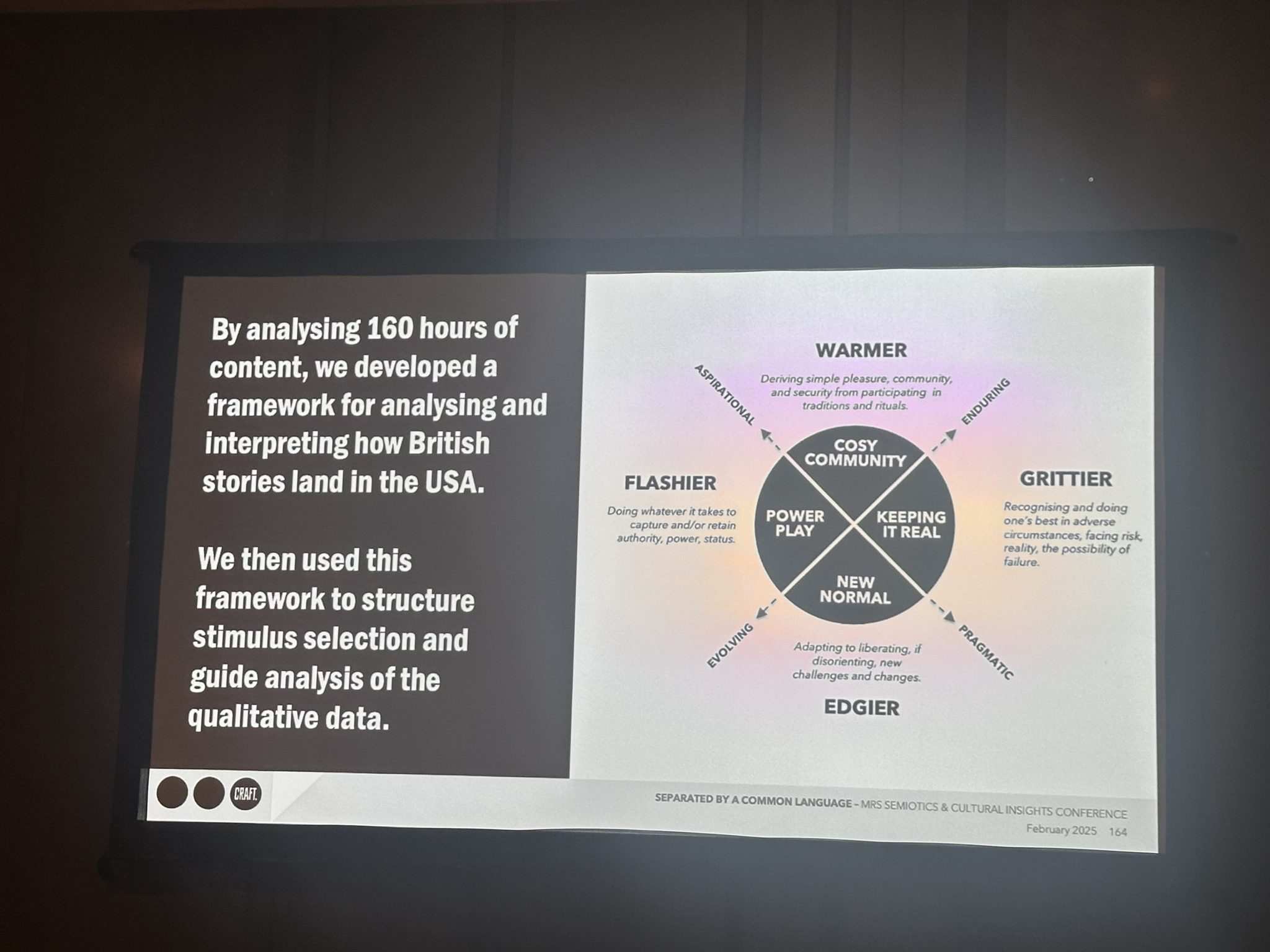
In February, at the Market Research Society’s Semiotics and Cultural Insights 2025 conference in London, Konrad Collao of the media and entertainment research agency Craft and Laurie Kearns, an insights manager for BBC Studios, presented on “how UK stories land in US culture.” Their talk shared learnings from an ambitious 2024 project to which Ramona Lyons and I, after having analyzed / analysed 160 hours of British TV, contributed, among other things, the chart shown here.
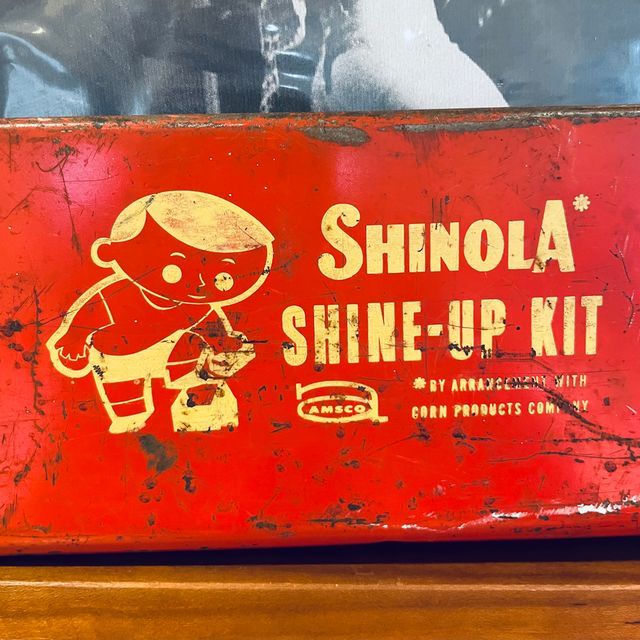
An object that surfaced while I was deacquisitioning….
During 1Q2025, Susan and I started packing up our Boston home, where we and our children have lived for 25 years. It’s a major, and ongoing, effort of deacquisition and relocation! So I’ve mostly avoided taking on new semiotics projects, teaching, or speaking engagements. Semiovox has several open proposals for 2Q2025, though.

In March, Rob Walker and I began recruiting contributors for GIVE IT UP, a place-based evolution of our object-oriented story telling experiments SIGNIFICANT OBJECTS and PROJECT:OBJECT. The project, which we’ll debut this summer, will involve 10 solo exhibits in venues in and around Kingston (NY), a reading and group exhibit, and an interactive component. We are very grateful for Susan Roe’s logistical support around this, our most complex endeavor to date.
GIVE IT UP contributors, each of whom lives in or near Kingston, so far (in alphabetical order):
- Writer, Lit Hub podcaster, and bookstore manager Drew Broussard — WOODEN SCIMITAR
- Writer and artist Karlie Flood — BARRETTE
- Author and music critic Will Hermes — OBJECT TBD
- Midtown Kingston Arts District (MKAD) Board of Directors president Maggie Inge — ANTIQUE HANDBAG
- Writer and editor Halimah Marcus — BICYCLE
- Author Ayana Mathis — OBJECT TBD
- Author and Bard College writer-in-residence Jenny Offill — TOY TIGER
- Musician and author Adam Snyder — PROTECTOGRAPH
- Rondout Valley Intermediate and Junior High School Library Media Specialist Emma Tourtelot — MARRIAGE DISH
This will be fun! More details to follow in 2Q2025.

I’m editor of the MIT Press’s RADIUM AGE proto-sf reissue series. During 1Q2025, we published the following titles.
- J.D. Beresford’s The Hampdenshire Wonder (March 2025, with a new introduction by Ted Chiang). “Extravagance… but of so remarkable a character that it keeps you almost spell-bound. What follows is philosophy, psychology, poetry, allegory, what you will.” — The Bookman (1911) | See this title at the MIT Press website.
- John Taine’s The Greatest Adventure (March 2025, with a new introduction by S.L. Huang). “A mixture of H. Rider Haggard, Conan Doyle, Roy Chapman Andrews, and a bottle of excellent gin.” — California Tech (1929) | See this title at the MIT Press website.
Also, we proofed the series’ Spring 2025 titles. Once we complete the back covers, we’ll send them to press. These titles are:
- Marietta S. Shaginyan’s Yankees in Petrograd (August 2025, translated from Russian and introduced by Jill Roese). “A novel of our time, in which major events succeed each other with purely cinematographic speed….” — Nikolai Meshcheryakov, “Foreword to the First Edition” (1924) | See this title at the MIT Press website.
- Before Superman: Superhumans of the Radium Age (August 2025, edited and introduced by Josh). An anthology of proto-sf stories and novel excerpts exploring the uncanny (and then brand-new) concept of the “superhuman.” | See this title at the MIT Press website.
We’re also working on exciting projects for 2026 and beyond, including proto-sf anthologies and translation projects.
For recent press about the series, see this post’s GOOD VIBRATIONS section.
RADIUM AGE SERIES UPDATES: 2022 | 2023 | 2024 | 1Q2025 | 2Q2025. FULL SERIES INFO.
Here at HILOBROW, I’ve continued to share my Radium Age-related research. For example, via the series RADIUM AGE POETRY, I’ve reissued overlooked proto-sf-adjacent poems from the years 1900–1935.
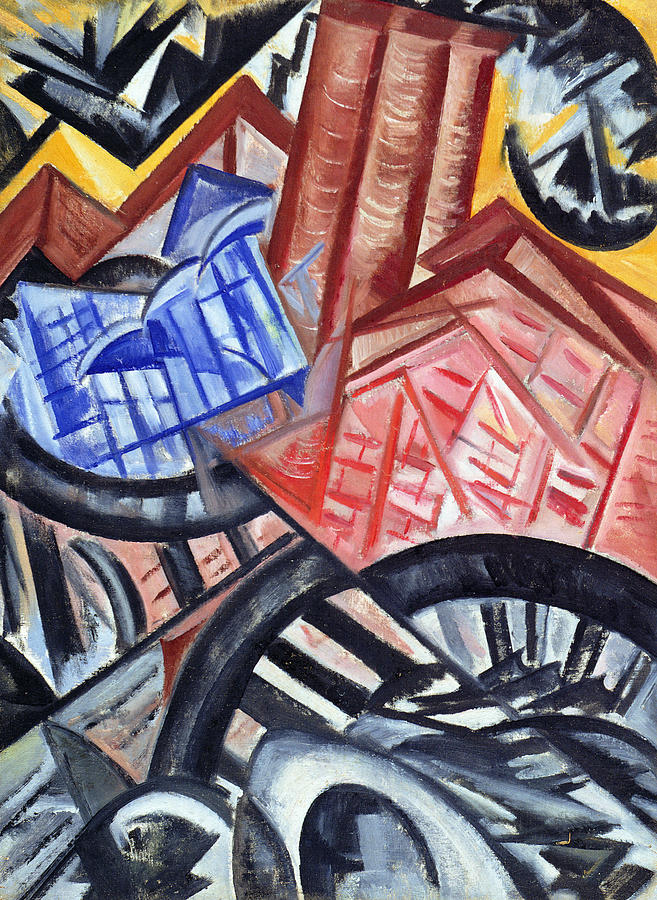
Here’s a sampling of the 1Q2025 RADIUM AGE POETRY lineup:
Valery Bryusov’s THE VOICE OF OTHER WORLDS | Olaf Stapledon’s “IF MAN ENCOUNTER…” | Maurice N. Corbett’s BLACK KINGDOMS OF THE FUTURE | Zinaida Gippius’s ELECTRICITY | Vasilisk Gnedov’s POEM OF THE END | Robinson Jeffers’ SHINE, PERISHING REPUBLIC | Agnes Lee’s RADIUM.
To see the full RADIUM AGE POETRY lineup, visit this page.
HILOBROW is published by King Mixer LLC; I’m the editor. To see everything that we’ve published recently, please check out the post HILOBROW 1Q2025. Here, I’ll just mention one series that I edited.

During 1Q2025, HILOBROW published MacGYVER YOUR ENTHUSIASM, a series of enthusiastic posts, contributed by 25 HILOBROW friends and regulars, analyzing and celebrating favorite TV shows from the Eighties (1984–1993). Here’s the lineup:
Michael Grasso on MAX HEADROOM | Heather Quinlan on MYSTERY SCIENCE THEATER 3000 | Mark Kingwell on CHINA BEACH | Judith Zissman on SANTA BARBARA | Adelina Vaca on TEENAGE MUTANT NINJA TURTLES | Deborah Wassertzug on MOONLIGHTING | Josh Glenn on VOLTRON | Adam McGovern on A VERY BRITISH COUP | Alex Brook Lynn on STAR TREK: THE NEXT GENERATION | Nikhil Singh on CHOCKY | Sara Ryan on REMINGTON STEELE | Vanessa Berry on THE YOUNG ONES | Dan Reines on GET A LIFE | Susannah Breslin on PEE-WEE’S PLAYHOUSE | Marc Weidenbaum on LIQUID TELEVISION | Elina Shatkin on PERFECT STRANGERS | Lynn Peril on THE SIMPSONS | David Smay on THE DAYS AND NIGHTS OF MOLLY DODD | Annie Nocenti on THE SINGING DETECTIVE | Tom Nealon on MIAMI VICE | Anthony Miller on ST. ELSEWHERE | Gordon Dahlquist on BLACKADDER | Peggy Nelson on SEINFELD | Nicholas Rombes on TWIN PEAKS | Ramona Lyons on ÆON FLUX.
I am very grateful to the series’ contributors, many of whom donated their honoraria to Covenant House, which provides housing and supportive services to youth facing homelessness.
To see my own HILOBROW series and posts from 1Q2025, please check out the WRITING (HILOBROW) section of this post; to see what’s coming up soon, please see the post 2Q2025 SNEAK PEEK.
SEMIOVOX, my branding consultancy’s eponymous website, is published by SEMIOVOX LLC; I’m the editor. For a full update on what we’ve published recently, please see the post SEMIOVOX 1Q2025. Here, I’ll just mention a few highlights.
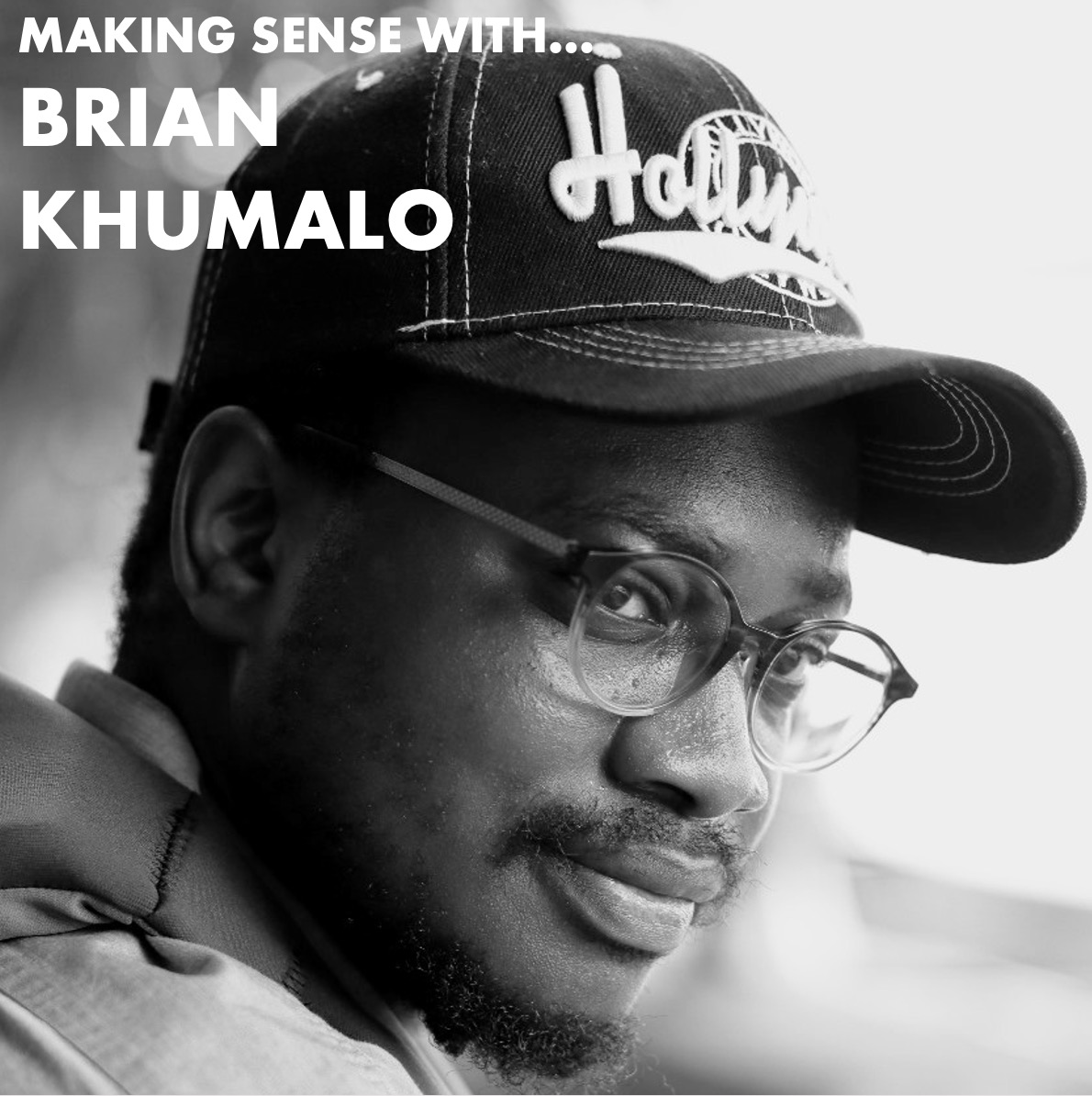
MAKING SENSE is a long-running series of Q&As dedicated to revealing what makes semioticians tick. Here’s the 1Q2025 series lineup:
MICHELLE FAN (Taiwan) | KRZYSTOF POLAK (Poland) | ASHLEY MAURITZEN (England) | JIAKUN WANG (China) | BRIAN KHUMALO (South Africa / USA) | HABIBA ALLARAKIA (Saudi Arabia) | L’UDMILA LACKOVÁ BENNETT (Czech Republic) | SIXIA LIU (Canada) | JENNIFER SIMON (England).

Via the series CASE FILE, our semiotician colleagues from around the world share stories of things they were amazed and amused to learn (whether or not they proved useful to the client). Here’s the 1Q2025 lineup:
Samuel Grange (France) on SWAZILAND CONDOMS | Serdar Paktin (Turkey/England) on KÜTUR KÜTUR | Ximena Tobi (Argentina) on SLUM PANDEMIC | Maciej Biedziński (Poland) on YOUTH LEISURE | Martha Arango on M | Chris Arning on X | Peter Glassen (Sweden) on WHEN SHABBY ISN’T CHIC | Joël Lim Du Bois (Malaysia) on RECONSTRUCTION SET | Ramona Lyons on THE FALL.
I’m coordinator for SEMIOFEST SESSIONS, a series of online get-togethers — intended not only to share best practices among, but to nurture collegiality and friendship within the global semio community.
For a full update on recent Semiofest Sessions, please see the post SEMIOVOX 1Q2025. Here are two examples:
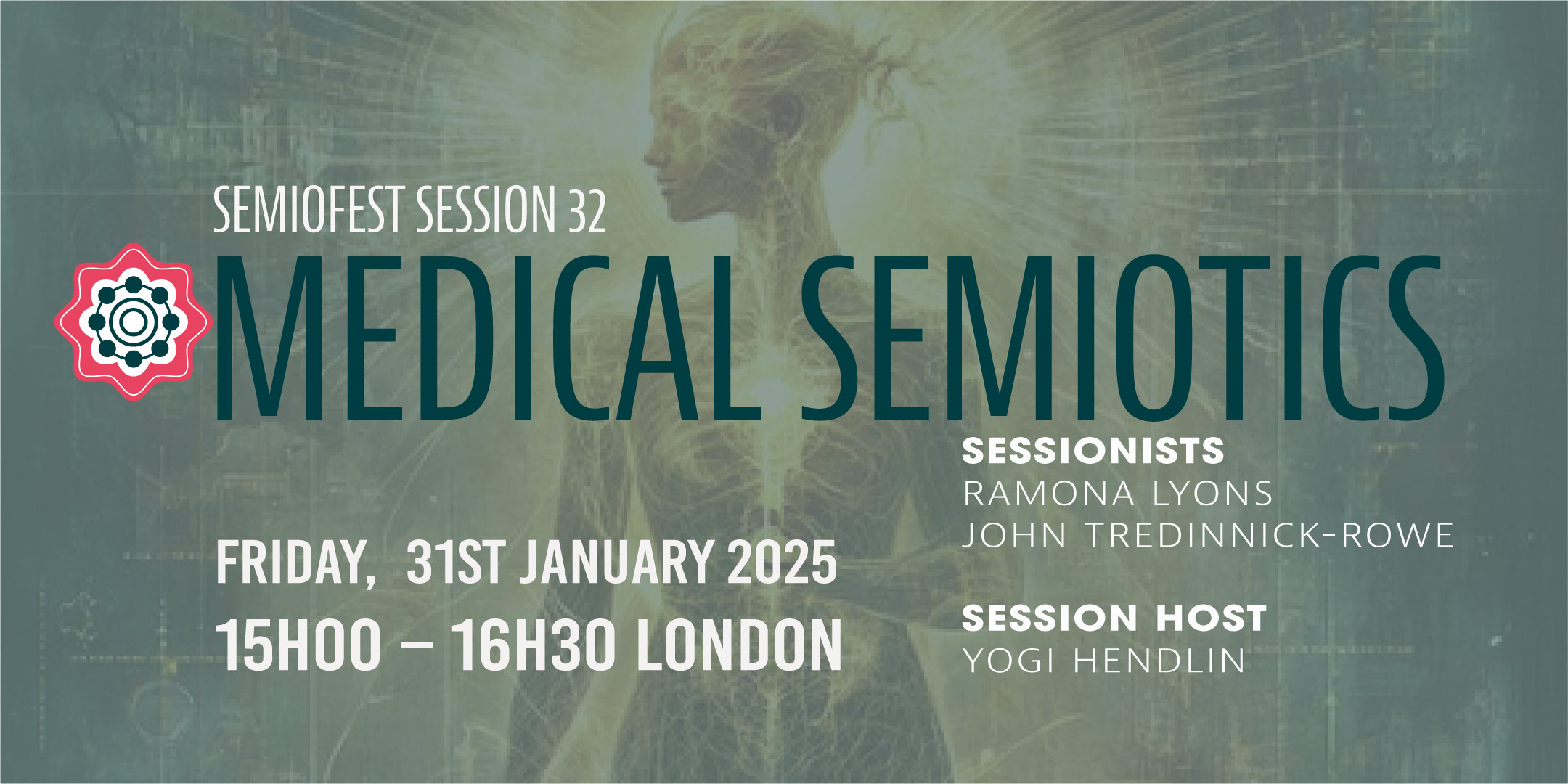
JANUARY: MEDICAL SEMIOTICS. The art of medical diagnosis (known in Greek antiquity as techne semeiotike) shares a long history with semiotics. Today, medical professionals increasingly recognize that the molecules, enzymes, and alkaloids with which we come in contact initiate sequences of semiotic transformations in our bodies at macro-, meso-, and micro-scales. Also, medicine is more than chemistry: How a society regards medicine, health, and disease is itself influenced by semiotic codes. Yogi Hendlin invited colleagues to discuss the current state — and future — of medical semiotics.
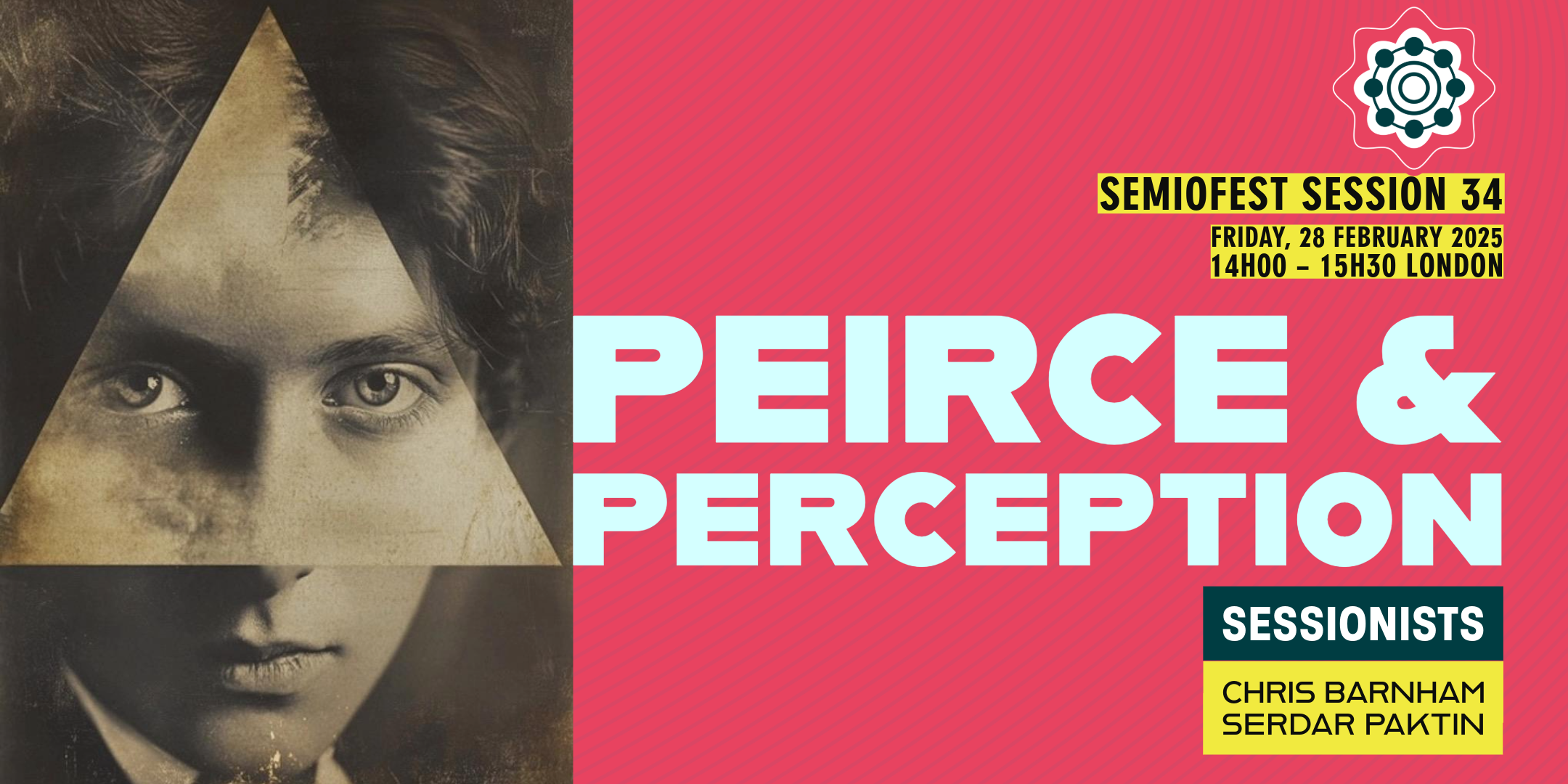
FEBRUARY: PEIRCE & PERCEPTION. C.S. Peirce’s semiotics, one reads in Chris Barnham’s The Natural History of the Sign, is fundamentally about cognition. Rejecting the Western “mirror” model of cognition that underpins our conventional view of perception, Peirce argues that signs are made by each of us, as we seek to understand the world around us. This is how we become integrated in our own cultures. Chris Barnham discussed the implications of Peirce’s model for commercial semiotics; and Serdar Paktin described what happens when the Western model of perception is imposed upon non-Western cultures.
MARCH: SEMIOTICS & SPIRITUALITY. The intellectual, but also physical and emotional experience of doing semiotics not only dilutes our sense of certainty, but can engender in us a feeling of unreality — which is not dissimilar to those experiences that might be described as mystical, sublime, or spiritual. Although (most) semioticians are not mystics, like spiritual seekers we are very much in pursuit of the unknown, perhaps even the ineffable or unfathomable. Inspired by such insights, Adelina Vaca invited three colleagues to offer perspectives on the meaning, and the lived experience, of “spirituality.”
During 1Q2025, I wrote the following HILOBROW series and posts.

- For the MacGYVER YOUR ENTHUSIASM series, I contributed a series introduction. Excerpt: “Despite the scorn we felt, in those days, for the TV-addicted ‘couch potato,’ for some of us TV-watching was not only an affirming but motivating experience.”
- For the MacGYVER YOUR ENTHUSIASM series, I contributed an installment on VOLTRON. Excerpt: “Much like Voltron vis-à-vis its own limbs, the ‘text’ of the Voltron that we know and love is… an assemblage of sorts. Perfect!”
- For the SEMIOPUNK series, I wrote about Samuel R. Delany’s THE EINSTEIN INTERSECTION. Excerpt: “Will Lobey’s species — hampered by ill-fitting bodies and hindered by outmoded mythologies — figure out how to liberate themselves too? Will we, Delany’s readers, also aim to liberate ourselves?”
- For the SEMIOPUNK series, I wrote about Roger Zelazny’s LORD OF LIGHT. Excerpt: “We need words! But we should also learn to tune into the flux upon which the meaning-structure that makes word-use possible is constructed. And having done so, we should seek to use words for beautiful purposes instead of ugly ones.”
- For the SEMIOPUNK series, I wrote about Philip K. Dick’s UBIK. Excerpt: “Joe Chip finds himself immersed in an alien semiosphere, if you will: This altered reality in which he and his teammates are moving back in time, in which things keep crumbling and dissolving, and in which Runciter keeps manifesting in unexpected ways. So Joe does what semioticians do…”

ALSO: I’ve continued to add installments in the solo series SCREENSHOTS, PHOTO DUMP, and NOT TODAY, EBAY.
During 1Q2025, at SEMIOVOX, I kicked off CASABLANCA CODES, an eight-part series via which I’ll offer a semiotic analysis of the underlying meaning-structure of Casablanca. Here’s the series lineup so far:
- FERRARI. Excerpt: “Ferrari isn’t being impulsively generous — if he was, he’d go ahead and smuggle Victor and Ilsa out himself, free of charge — or at a reduced price. Instead, his shrewd observation of Rick’s behavior regarding Ilsa has encouraged the chess master to attempt, yet again, to reactivate Rick’s sense of morality and compassion. True, if he succeeds in this gambit, he’ll lose access to the letters of transit… but unlike everyone else in the movie, Ferrari seems cynically aware that these are just a MacGuffin.”
- LASZLO. Excerpt: “Laszlo does not succumb to this rhetoric. Standing up — which helps counteract the sense that he is a schoolboy being lectured to by a superior — he announces, “I’ve never accepted that privilege, and I’m now on French soil.” This is how a counter-discourse operates: It doesn’t accept. Laszlo refuses to accept consensus reality; he rejects the counsel of experts and authority figures. He is being the change he wants to see in the world.”
- STRASSER. Excerpt: “As an autocratic, Gestapo-adjacent figure, Major Strasser is prickly, to say the least, whenever Renault or Laszlo says anything that seems to contradict the Nazi party line. He is forever taking offense, and misses no opportunity to instruct his interlocutors on how they should see, think, feel, and speak about the Reich. Which he would have everyone regard as a natural, permanent, and inevitable phenomenon.”
For the CASE FILE series at SEMIOVOX, I contributed an installment on THE AMERICAN SPIRIT. Excerpt: “Are you listening, Democrats? Here are five insights into the ‘spirit of America’ that could help you turn things around with young white men.”
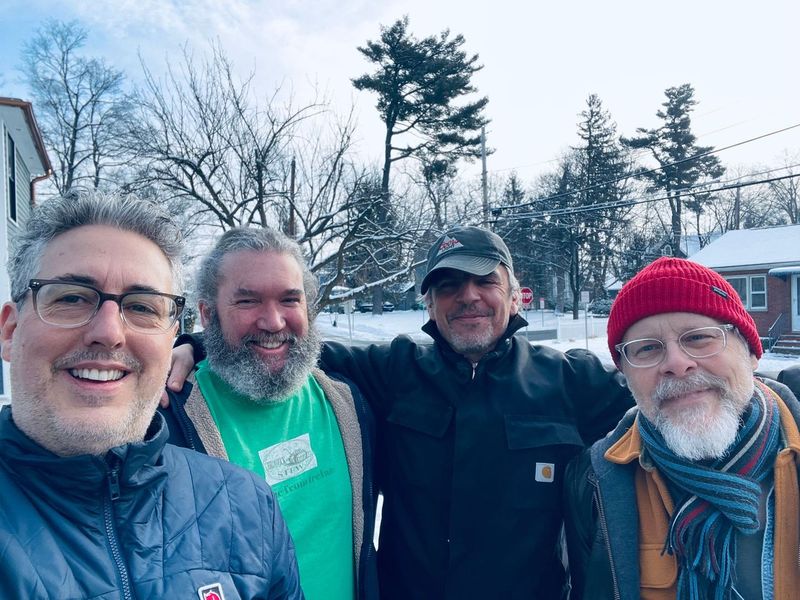
I continue to toil at (science) fiction-writing with the support of my writer’s group. Here we are during a weekend writers’ retreat, in February. From left: Josh, Tom Nealon, James Parker, Matthew Battles.
Getting the word out, during 1Q2025…
For a full update on recent Radium Age series publicity, please see the post RADIUM AGE 1Q2025. Here are a few examples.
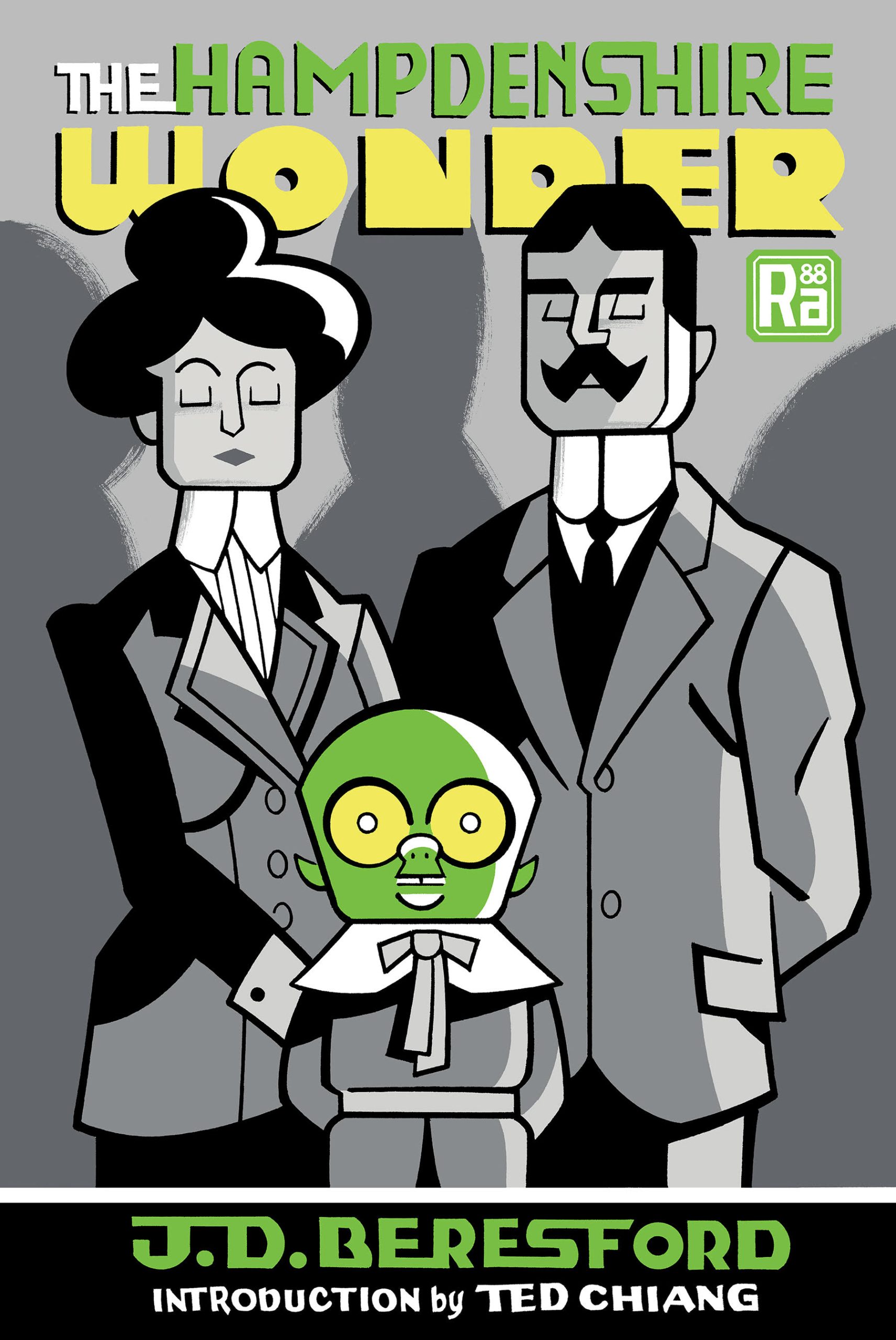
- In February, The Inhumans was longlisted for the British Science Fiction Awards’ Best Collection award.
- In February, The Inhumans was included (in the ANTHOLOGIES / REPRINT section) of the annual Locus Recommended Reading List.
- The March 2025 issue of Locus included Niall Harrison’s review of the MIT Press’s edition of The Hampdenshire Wonder. “One of the earliest exemplars in SF of the genius unbound, the more-than-human intellect whose insights are sublime and terrible. The Wonder, as the child is primarily known, devours entire libraries of philosophy and science, eventually expounding a theory-of-everything that (of course) cannot be recreated on the page, but implies what [Ted] Chiang calls (brilliantly) in his introduction a kind of “cognitive heat death,” a point beyond which learning, and perhaps therefore living, becomes irrelevant. The heightened passages grappling with this possibility convey, without any particular pyrotechnics, the proper scientific romance chill of perspective, which is to say that The Hampdenshire Wonder has more than just historical value, and earns this latest reprint.”
- In March, Reactor included the MIT Press’s edition of The Hampdenshire Wonder in its Can’t Miss Indie Press Speculative Fiction for March and April 2025 round-up. “The great Ted Chiang contributed a new introduction to this edition of J. D. Beresford’s novel The Hampdenshire Wonder. It’s about a superhuman child whose observations of — and detachment from — the rest of humanity lead to alarm and the collapse of his family.”
- In March, Ted Chiang’s introduction to The Hampdenshire Wonder was published by Literary Hub. Excerpt: “Not only does Victor Stott frighten the ignorant and superstitious, he induces a profound terror in the educated and intellectual. Seen in this light, the first novel about superintelligence is actually a work of horror SF, a cautionary tale about the dangers of knowing too much.”
- In March, Reactor included the MIT Press’s edition of The Greatest Adventure in its Can’t Miss Indie Press Speculative Fiction for March and April 2025 round-up. “When mathematician Eric Temple Bell wasn’t writing nonfiction under his given name, he was exploring the world of science fiction under the pseudonym of John Taine. A new edition of Taine’s novel The Greatest Adventure revisits this tale of genetic engineering gone overboard in Antarctica; S.L. Huang wrote the introduction.”
In January, I enjoyed Max’s performance at Reforesters Laboratory (in Williamsburg), as they guided us along “the haptic threshold between sound and sub.”
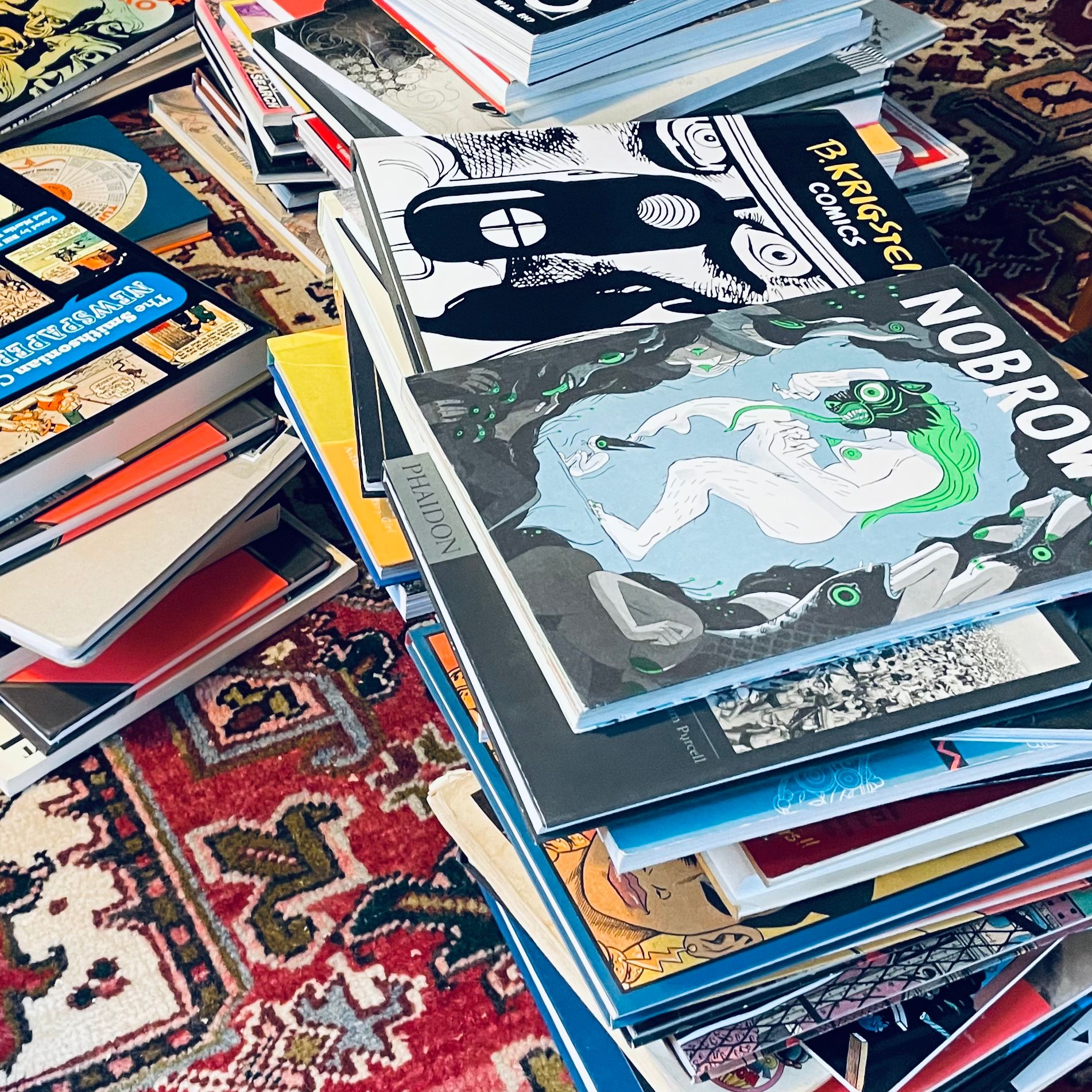
In February, I started to clear out the bookshelves. We are transitioning out of our home in Boston’s West Roxbury neighborhood…. See PHOTO DUMP (3/25) for more memorabilia.
Susan and I spent most of March in Boston, working on our downsizing project — but also visiting with friends and family. Here’s our old friend Nate McBride fronting the Desert Bats at the Square Root (in Roslindale). Highly recommended!
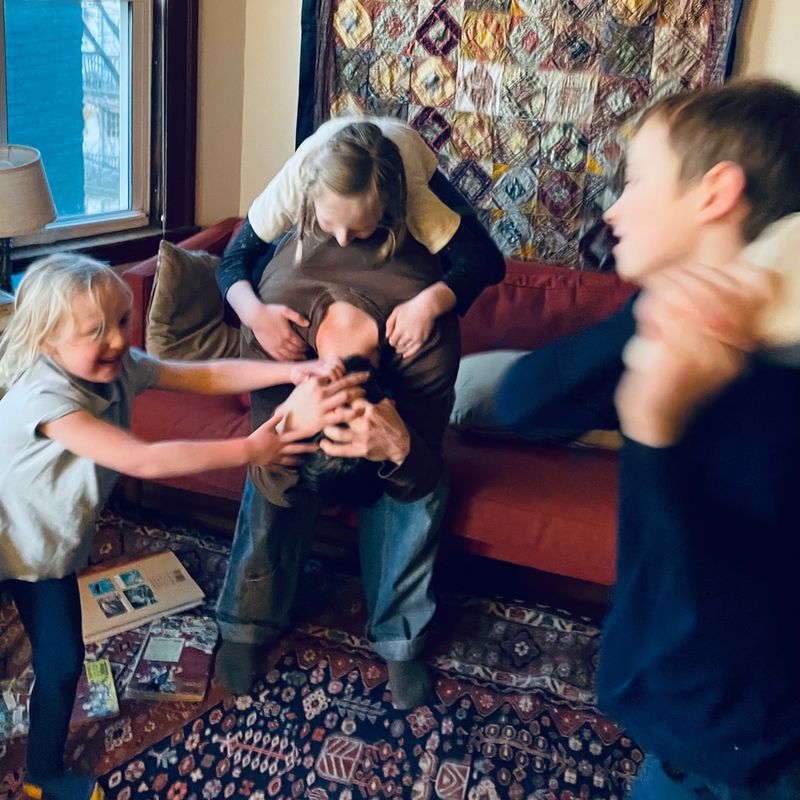
Max visiting their cousins Robin, Jane, and Beatrice in Jamaica Plain, in March.
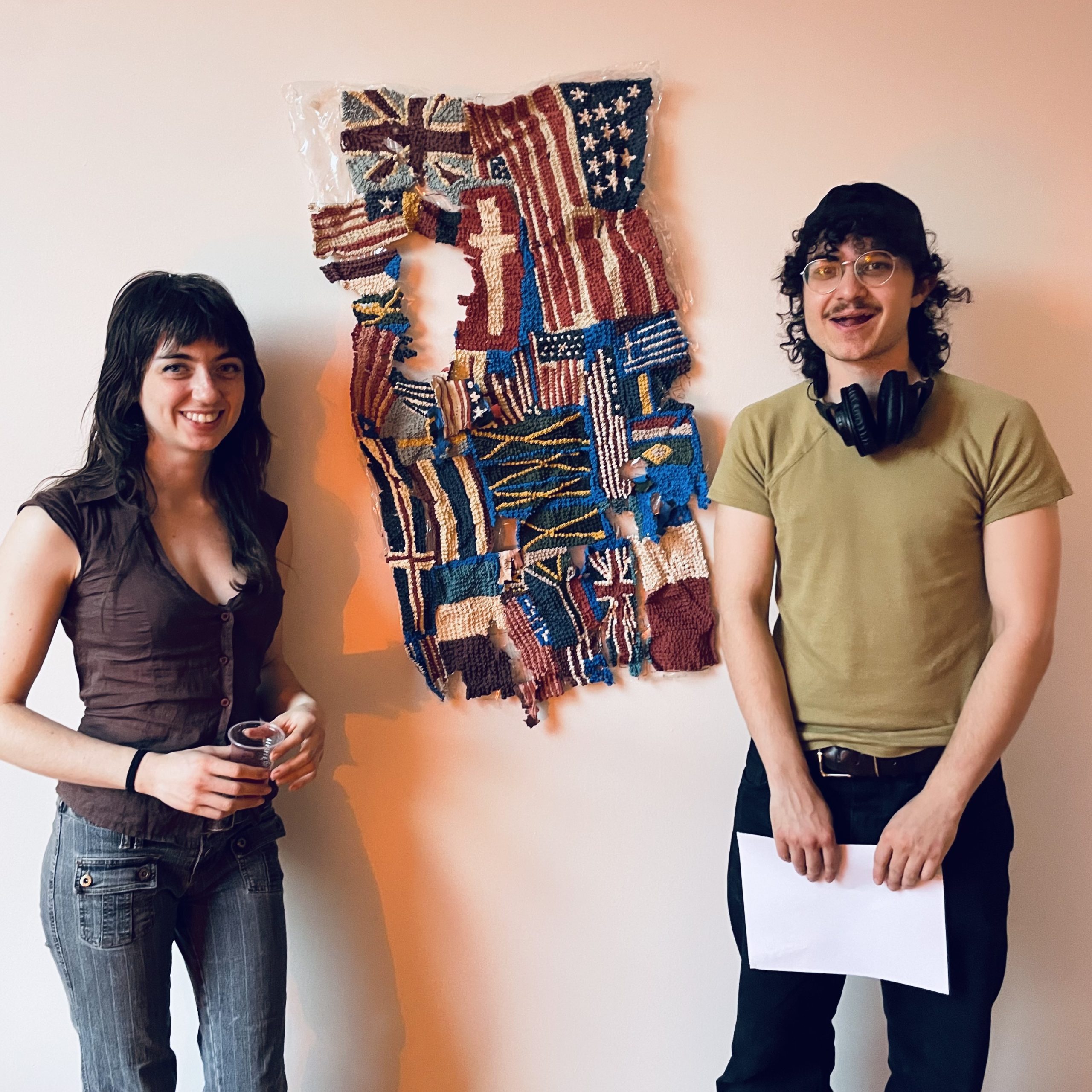
We made a quick trip to Brooklyn at the end of March. Shown here: HILOBROW friends Jonathan Pinchera and Juliette Plante at MOLAR, a group show in Jonathan’s “recently vacated illegal conversion apartment.”
On to 2Q2025…
MORE HYPOCRISY: 2010 | 2011 | 2012 | 2013 | 2014 | 2015 | 2016 | 2017 | 2018 | 2019 | 2020 | 2021 | 2022 | 2023 | 2024 | 1Q2025.

